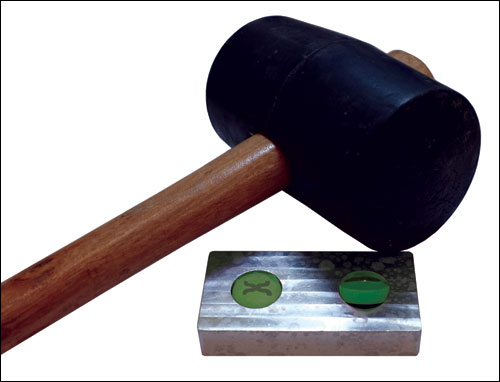Cerca de 18 meses atrás, a Xerafy modificou sua tag para inserção Pico-iN para um cliente, uma empresa de construção, e assim torná-la funcional em objetos de metal, tais como vigas, sem o uso de adesivo epóxi. O sucesso da tag Xerafy modificada – que pode ser inserida até em uma rolha de garrafa de vinho – levou a empresa a comercializar a etiqueta para o mercado em geral. Os resultados desta iniciativa, ou seja, as tags Pico Wedge e Nano Wedge, estão programados para ser lançados comercialmente em breve.
As tags, que vem envoltas em um polímero de nylon, podem ser instaladas em um orifício sem a necessidade de epóxi para mantê-las no lugar, diz Evelyn Ong, diretor de vendas da Xerafy. Isto elimina horas de espera para que o adesivo esteja fixado.
As empresas que usam as novas tags da Xerafy normalmente rastreiam ativos na construção de usinas de gás e equipamentos de perfuração de petróleo, além de instrumentos cirúrgicos, peças automotivas e outros componentes para a indústria aeroespacial.
Como as tags são tipicamente utilizadas em ambientes adversos em que poderiam ser danificadas ou soltas, um usuário poderia fazer um furo em um ativo, colocar a tag em um buraco e, em seguida, preencher o buraco com resina epóxi, a fim de manter a tag em lugar. No entanto, pode levar até quatro horas para alguns adesivos secarem. Além disso, se a etiqueta for conectada a uma superfície vertical, a resina de epóxi não será distribuída uniformemente.
Alguns clientes tinham compartilhado esta preocupação com a Xerafy, diz Ong. A empresa desenvolveu a primeira tag Wedge para uma empresa de construção civil, mais de um ano atrás, mas agora está lançando duas versões, para qualquer um dos seus clientes que se beneficiariam de uma marca que é mais fácil para incorporar.
Ela exemplifica com uma tag na rolha de um vinho, que pode ser pressionada para dentro de uma garrafa, criando assim uma vedação. Ela pode ser pressionada em um buraco com a mão, ou ser batida, embora recomende o uso de um martelo de face de borracha. A etiqueta é feita de tal forma que pode sustentar diversos tipos de impactos. Para situações que exigem a tag seja montada de modo mais seguro, observa, o epóxi pode ser adicionado.
Tanto o Pico Wedge e o Nano Wedge são tags RFID UHF EPC passivas projetadas para aplicação em metal. Cada uma delas contém um chip RFID Alien Technology Higgs-3, com 512 bits de memória e uma classificação IP68. A Pico Wedge mede 24 milímetros por 6 milímetros e tem um alcance de leitura de até 8,2 pés quando embutidos em metal. Maior, a Nano Wedge mede 35,5 milímetros por 7,5 milímetros e tem um alcance de leitura de até 13,1 pés quando incorporado em metal.
Como a tag vem com um revestimento adicional para mantê-la em um furo e para suportar golpes de martelo, o seu custo será cerca de 20% maior do que as marcas Xerafy anteriores, que são aplicadas no método tradicional com epóxi.
Cerca de meia dúzia de clientes globais, em uma variedade de indústrias, estão testando as novas tags. De acordo com Ong, os mais esperados de estar interessados em incluir as tags são empresas aeroespaciais, de rastreamento de grandes peças metálicas, além de empresas de cuidados de saúde para rastreamento de instrumentos cirúrgicos e dispositivos médicos.
A Xerafy demonstrou as novas tags em seu estande no RFID Journal LIVE! 2013, em Orlando, nos EUA.



